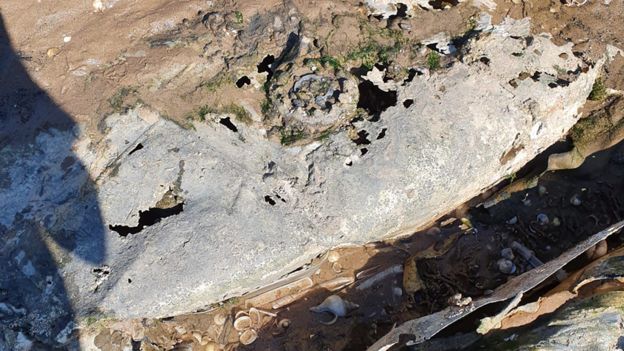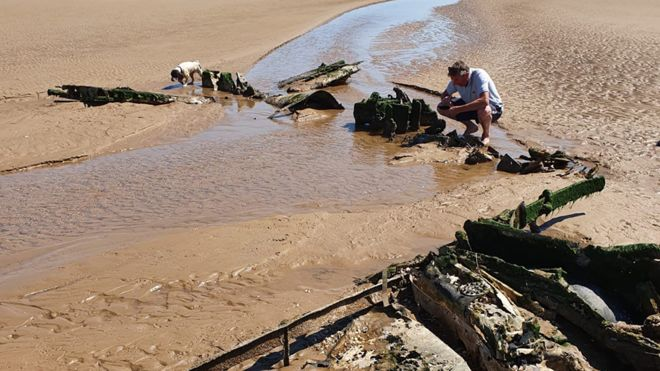Graham Holden and his partner were walking their dog on a Cleethorpes beach when they discovered wreckage that left him “amazed.”
Experts believe that what they found is the remains of an RAF Bristol Beaufighter which crashed shortly after it took off from North Coates in Lincolnshire one day in April 1944. RAF North Coates was located six miles southeast of Cleethorpes when it operated from 1914 until its closure in 1990. The airfield is now operated privately.
The two-engine Beaufighters were used for nighttime fighting and for attacking targets on the ground. They were especially useful against ships when the plane was armed with torpedoes.

Holden said that he had walked on the beach for thirty years and never seen the wreck. Low tides had shifted the sands around the wreckage making it visible for possibly the first time in over 70 years.
Dog walkers find wreckage of WWII RAF fighter plane on Cleethorpes beach #RAF #WW2 https://t.co/iV8g6LQ1ta
— Genealogy Jude (@GenealogyJude) May 30, 2020
When the tide returned, the wreckage was covered again. Holden took photographs of the wreckage, including instrument panels which were remarkably intact after all this time.
The Coastguard asked people to stop searching for the wreckage as the mud and the fast incoming tides combined to make the area dangerous.
Holden hopes that his photographs can be used by experts to confirm that is the crashed Beaufighter from 1944. He said that he is primarily grateful that it was found so that it can be recorded in case it is uncovered again in the future.
The Bomber County Aviation Resource stated that a plane from the 254 Squadron had an engine failure during a training flight and was forced to crash-land on the beach. The two crew members survived the crash without injury.
Beaufighters were developed by Bristol. They are considered one of the more important aircraft of World War II. They were a significant player in the Battle of Britain and used heavily in the defense of Great Britain.
Beaufighters were developed to use many of the parts already used in the Beaufort fighter plane. The main fuselage and the engine mountings were the only components of the Beaufighter that were entirely new.
The rest of the components were either identical to the earlier plane or altered only slightly from those original designs.
Originally used as a day fighter when introduced in 1939, Beaufighters painted all black and outfitted with secret AI Radar would go on to record an exceptionally high numbers of ‘Night Kills.’
Beaufighters would account for more than half of the Luftwaffe bombers shot down during the Blitz. It is said that a single burst from the four mounted guns on the Beaufighter was often enough to shoot down an enemy plane.
The Japanese referred to the Beaufighter as the “Whispering Death.” This was a reference to the speed at which they would appear, attack and return home.
New Video: The Piggyback Flight, a Story of Heroism, Courage & Strength
Production of the Beaufighters was split between the Bristol Aeroplane Company, the Fairey Aviation Company and Roots. A variation of the Beaufighter was built in Australia by the Government Aircraft Factory. A total of nearly 6,000 of the planes were built by the four companies.
